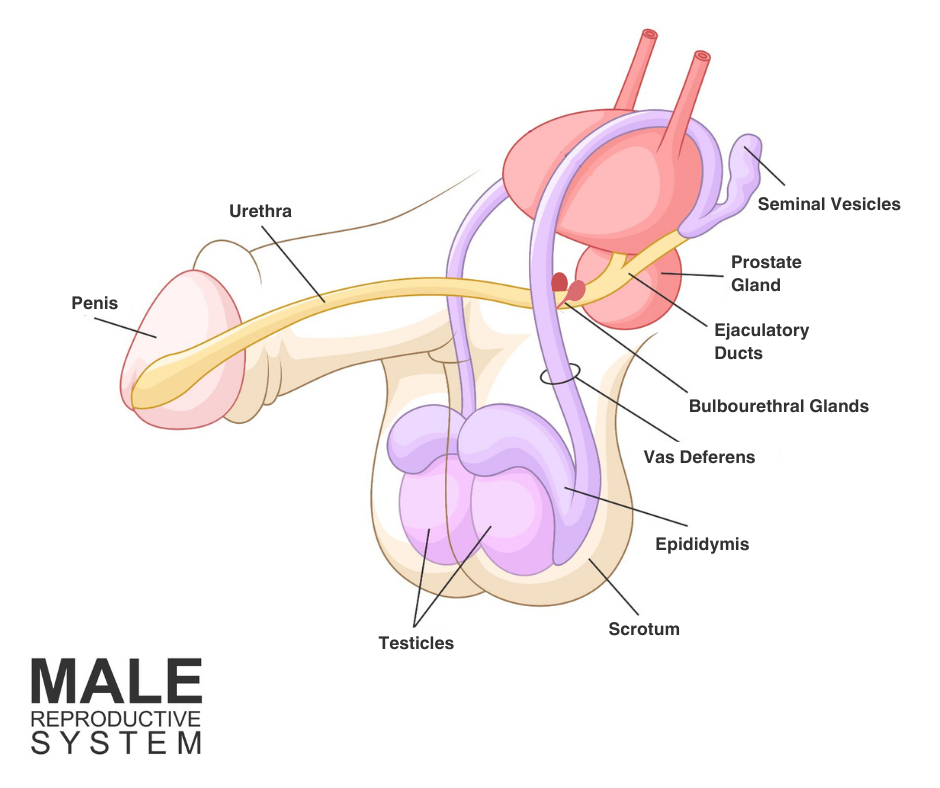Anatomy of the Male Reproductive System: A Deep Dive
Synopsis:
The male reproductive system is a fascinating and intricate machinery designed to ensure the continuation of species. Its primary function is to produce, maintain, and transport sperm and protective fluid (semen), discharge sperm within the female reproductive tract during sex, produce and secrete male sex hormones responsible for maintaining the male reproductive system. Understanding its anatomy is crucial, both from a biological perspective and to gain insight into men’s health issues. Let’s embark on an anatomical journey of this essential system.

1) External Male Reproductive Structures
a. The Penis:
Purpose: Used for both urination and copulation.
Anatomy: Consists of the shaft and the glans (tip). The shaft isn’t a muscle; instead, it’s made of three columns of spongy tissue that fill with blood and cause the penis to become erect when a man is aroused.
b. The Scrotum:
Purpose: Holds and protects the testicles.
Anatomy: A pouch-like structure made of skin and muscles. Its main job is to maintain the temperature of the testicles, which require a temperature slightly cooler than the body’s core.
2) Internal Male Reproductive Structures
a. The Testicles (Testes):
Purpose: Produce sperm and testosterone, the primary male sex hormone.
Anatomy: Oval organs about the size of large olives that lie in the scrotum, secured by the spermatic cord.
b. The Epididymis:
Purpose: Transports and stores sperm cells that are produced in the testes.
Anatomy: A long, coiled tube located on the backside of each testicle. Sperm mature here and are stored until ejaculation.
c. The Vas Deferens:
Purpose: Transport mature sperm to the urethra.
Anatomy: A long tube that runs from the epididymis up into the pelvic cavity.
d. The Ejaculatory Ducts:
Purpose: Where the vas deferens meets the seminal vesicles, and where sperm mixes with seminal fluid to form semen.
Anatomy: Formed by the fusion of the vas deferens and the seminal vesicles.
e. The Urethra:
Purpose: Carries urine from the bladder and semen from the ejaculatory ducts out of the body.
Anatomy: Runs through the center of the prostate gland and then the penis.
3) Accessory Glands
a. The Seminal Vesicles:
Purpose: Produce fluid that nourishes the sperm and makes them more mobile.
Anatomy: Sac-like pouches that attach to the vas deferens near the base of the bladder.
b. The Prostate Gland:
Purpose: Secretes a fluid that nourishes and protects sperm.
Anatomy: Located just below the bladder. The urethra runs through the center of the prostate, from the bladder to the penis.
c. The Bulbourethral Glands (Cowper’s Glands):
Purpose: Produce a clear, slippery fluid that empties directly into the urethra.
Anatomy: Located on the sides of the urethra, just below the prostate gland.
THE BOTTOM LINE
The male reproductive system, with its combination of external and internal structures, works in a harmonious cycle, ensuring the production and delivery of sperm. It’s essential to understand its anatomy and functions, as it not only provides insight into reproductive health but also affects overall health, hormonal balance, and well-being. Regular check-ups and awareness can ensure that this system remains robust and functional throughout a man’s life.
